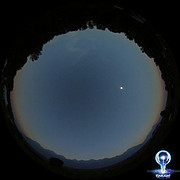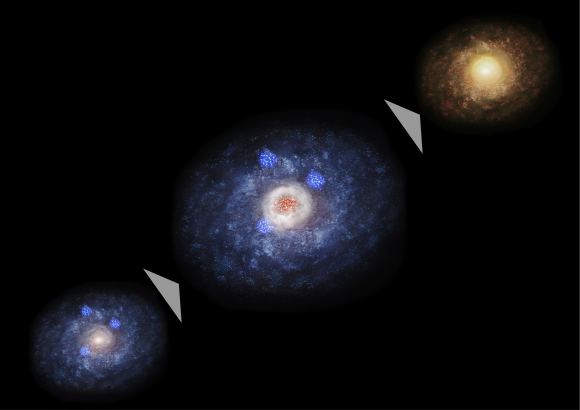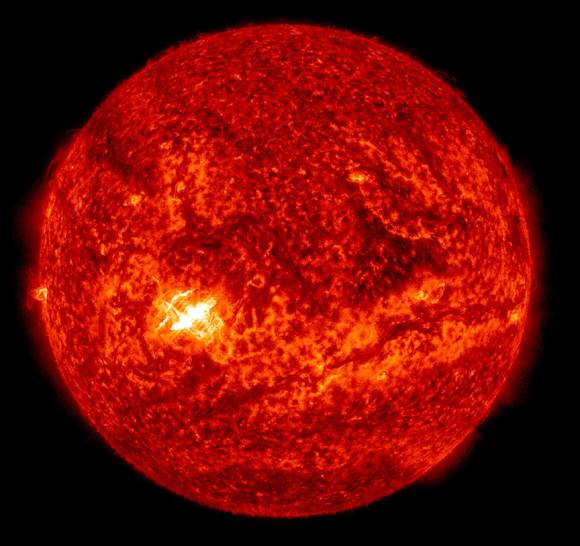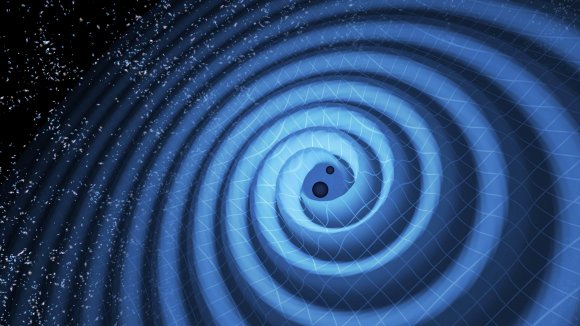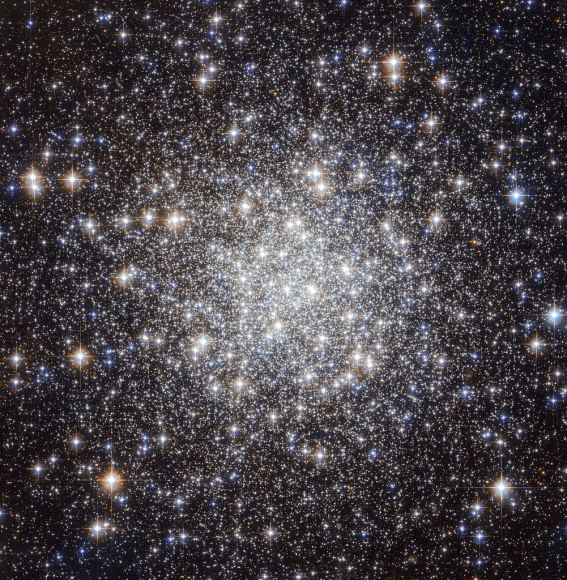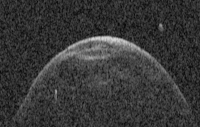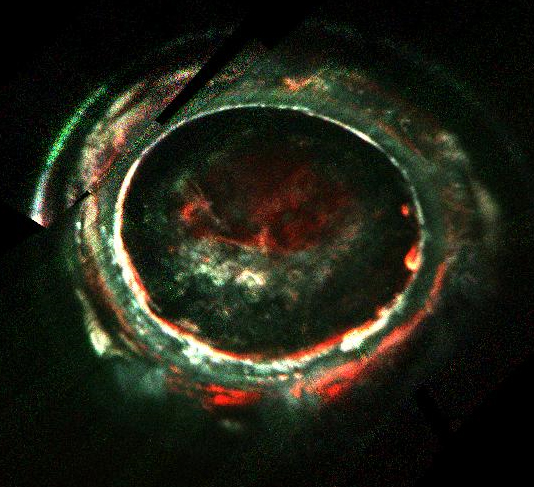Three ‘super-Earth’ exoplanets orbiting nearby star discovered
(Phys.org)—NASA’s prolonged Kepler mission, known as K2, has made another significant discovery, revealing the existence of three new exoplanets. The newly found alien worlds circle the nearby star GJ 9827 and were classified as “super-Earths.” The finding is presented in a paper published Sept. 6 on arXiv.org. Powered by WPeMaticoRead More →
Pulsar jackpot reveals globular cluster’s inner structure
The Milky Way is chock full of star clusters. Some contain just a few tens-to-hundreds of young stars. Others, known as globular clusters, are among the oldest objects in the Universe and contain up to a million ancient stars. Powered by WPeMaticoRead More →
Galaxies Swell due to Explosive Action of New Stars
Galaxies Swell due to Explosive Action of New Stars In 1926, famed astronomer Edwin Hubble developed his morphological classification scheme for galaxies. This method divided galaxies into three basic groups – Elliptical, Spiral and Lenticular – based on their shapes. Since then, astronomers have devoted considerable time and effort in an attempt to determine how galaxies have evolved over the course of billions of years to become these shapes. One of th most widely-accepted theories is that galaxies changed by merging, where smaller clouds of stars – bound by mutual gravity – came together, altering the size and shape of a galaxy over time. However,Read More →
Cassini Conduct a Final Flyby of Titan Before Crashing into Saturn
Cassini Conduct a Final Flyby of Titan Before Crashing into Saturn When the Cassini spacecraft arrived around Saturn on July 1st, 2004, it became the fourth space probe to visit the system. But unlike the Pioneer 11 and Voyager 1 and 2 probes, the Cassini mission was the first to establish orbit around the planet for the sake of conducting long-term research. Since that time, the spacecraft and its accompanying probe – the Huygens lander – have revealed a startling amount about this system. On Friday, September 15th, the Cassini mission will official end as the spacecraft descends into Saturn’s atmosphere. In part of thisRead More →
A one-of-a-kind star found to change over decades
Astronomers studying the unique binary star system AR Scorpii have discovered the brightness of the system has changed over the past decade. The new evidence lends support to an existing theory of how the unusual star emits energy. AR Scorpii consists of a rapidly spinning, magnetized white dwarf star that mysteriously interacts with its companion star. The system was recently found to more than double in brightness on timescales of minutes and hours, but research recently published in The Astrophysical Journal Letters found variability on a timescale of decades. Powered by WPeMaticoRead More →
Weekly Space Hangout -Sept 13, 2017: Dr. Claudia Lagos from ICRAR
Weekly Space Hangout -Sept 13, 2017: Dr. Claudia Lagos from ICRAR Hosts: Fraser Cain (universetoday.com / @fcain) Dr. Paul M. Sutter (pmsutter.com / @PaulMattSutter) Dr. Kimberly Cartier ( KimberlyCartier.org / @AstroKimCartier ) Dr. Morgan Rehnberg (MorganRehnberg.com / @MorganRehnberg ChartYourWorld.org) Special Guest: This week’s guest is Dr. Claudia Lagos (@CDPLagos). Claudia is the Research Assistant at the International Centre for Radio Astronomy Research, in the University of Western Australia. Dr. Lagos is one of the core researchers for the Cosmic Dawn Centre (DAWN). Her expertise is in modelling of physical processes in galaxies, such as gas accretion onto galaxies, star formation, stellar feedback, gas accretion ontoRead More →
Photosynthesis under light conditions different from the Earth
Researchers at the Astrobiology Center (ABC) of National Institutes of Natural Science (NINS) in Japan and their colleagues have proposed that Earth-like red-edge reflection patterns could be observed on exoplanets around M-dwarfs. They point out that the first oxygenic phototrophs are most likely to have evolved underwater to utilize visible light, as occurred in the primordial ocean on Earth. Powered by WPeMaticoRead More →
Coronal hole faces Earth
A southern extension of the northern hemisphere polar coronal hole is facing our planet today. It is the same coronal hole that caused minor G1 geomagnetic storm conditions for four days last month. Powered by WPeMaticoRead More →
Unexpected Solar Flare is Also the Largest in Twelve Years
Unexpected Solar Flare is Also the Largest in Twelve Years The past summer has been a pretty terrible time in terms of weather. In addition to raging fires in Canada’s western province of British Columbia, the south-eastern United States has been pounded by successive storms and hurricanes – i.e. Tropical Storm Emily and Hurricanes Franklin, Gert, Harvey and Irma. As if that wasn’t enough, solar activity has also been picking up lately, which could have a serious impact on space weather. This past week, researchers from the University of Sheffield in the UK and Queen’s University Belfast detected the largest solar flare in 12 years.Read More →
Astronomers resolve mystery of white dwarf’s mass
New observations of the white dwarf/red dwarf binary star 40 Eridani BC by astronomers at the U.S. Naval Observatory (USNO) have revealed new, definitive values for the orbital period and masses of the components of this interesting stellar pair. A paper describing the observations and the results by Dr. Brian Mason, Dr. Bill Hartkopf, and intern Korie Miles has been accepted for publication in the Astronomical Journal. Powered by WPeMaticoRead More →
Gravitational Waves will let us see Inside Stars as Supernovae Happen
Gravitational Waves will let us see Inside Stars as Supernovae Happen On February 11th, 2016, scientists at the Laser Interferometer Gravitational-wave Observatory (LIGO) announced the first detection of gravitational waves. This development, which confirmed a prediction made by Einstein’s Theory of General Relativity a century ago, has opened up new avenues of research for cosmologists and astrophysicists. Since that time, more detections have been made, all of which were said to be the result of black holes merging. However, according to a team of astronomers from Glasgow and Arizona, astronomers need not limit themselves to detecting waves caused by massive gravitational mergers. According to aRead More →
X8.2 coronal mass ejection
Yesterday’s X8.2 (R3-strong) solar flare from sunspot region 2673 was one of the most spectacular solar flares we have ever seen. Not only was this the second strongest solar flare of the current solar cycle, it also launched an extremely fast and broad coronal mass ejection. What a way to say goodbye! Let’s hope it survives its 2 week journey on the far side of the Sun! Powered by WPeMaticoRead More →
Astronomers spun up by galaxy-shape finding
For the first time astronomers have measured how a galaxy’s spin affects its shape. Powered by WPeMaticoRead More →
Messier 56 – the NGC 6779
Messier 56 – the NGC 6779 Welcome back to Messier Monday! We continue our tribute to our dear friend, Tammy Plotner, by looking at the the globular star cluster known as Messier 56. Enjoy! In the 18th century, while searching the night sky for comets, French astronomer Charles Messier kept noting the presence of fixed, diffuse objects in the night sky. In time, he would come to compile a list of approximately 100 of these objects, with the purpose of making sure that astronomers did not mistake them for comets. However, this list – known as the Messier Catalog – would go on to serveRead More →
Astronomers reveal new insights into the origin and evolution of open cluster NGC 6791
(Phys.org)—By conducting an orbital analysis, a team of astronomers led by Luis Martinez-Medina of the National Autonomous University of Mexico has uncovered new details about the origin and evolution of the old, metal-rich open cluster NGC 6791. The findings were presented Sept. 4 in a paper published on arXiv.org. Powered by WPeMaticoRead More →
Image: Hubble sees newborn stars in arms of a spiral galaxy
Like firecrackers lighting up the sky on New Year’s Eve, the majestic spiral arms of NGC 5559 are alight with new stars being born. NGC 5559 is a spiral galaxy, with spiral arms filled with gas and dust sweeping out around the bright galactic bulge. These arms are a rich environment for star formation, dotted with a festive array of colors including the newborn stars glowing blue as a result of their immensely high temperatures. Powered by WPeMaticoRead More →
Extreme jet ejections from the black hole X-ray binary V404 Cygni
A black hole X-ray binary (BHXB) is a black hole orbiting a normal star. When matter from the normal star accretes onto the black hole, a jet of charged particles is ejected at relativistic (near-light) speeds, and these particles emit strong X-ray radiation. The processes involved are thought to be similar to ones active under the more dramatic conditions in active galactic nuclei. Most known BHXBs are located in our galaxy, and being much closer to us they can be studied in more detail than their more distant cousins. Powered by WPeMaticoRead More →
Telescopes Worldwide Collaborate to Observe Asteroid Florence During its Recent Close Approach to Earth
One of the largest near-Earth asteroids, 3122 Florence, passed by our planet on September 1, 2017 at about 18 times the distance to the Moon. A concerted observational campaign has led to many new insights, including the discovery of two moons orbiting Florence and new information on the physical properties of Florence itself. Powered by WPeMaticoRead More →
Juno Missions Make Mysterious Finds about Auroras on Jupiter
Juno Missions Make Mysterious Finds about Auroras on Jupiter Even after decades of study, Jupiter’s atmosphere continues to be something of a mystery to scientists. Consistent with the planet’s size, its atmosphere is the largest in the Solar System, spanning over 5,000 km (3,000 mi) in altitude and boasting extremes in temperature and pressure. On top of that, the planet’s atmosphere experiences the most powerful auroras in the Solar System. Studying this phenomena has been one of the main goals of the Juno probe, which reached Jupiter on July 5th, 2016. However, after analyzing data collected by the probe’s instruments, scientists at Johns Hopkins UniversityRead More →
